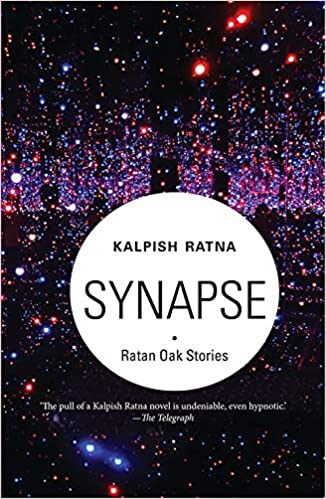Synapse: Ratan Oak Stories is my first encounter with the fictional world of Kalpish Ratna, about whom frankly I knew nothing before this book came to me. Their works ‘explore the interface between science and humanities’. Ratan Oak and Ramratan Oak, his grandfather, made a debut in the novel The Quarantine Papers. Both authors are surgeons, and the stories are reflective of this knowledge. The title Synapse as defined by Kalpana Swaminathan herself is this: ‘Within your brain there are a hundred trillion synapses. And these are all the spaces between your nerve cells. But outside of your brain, all around us, we exist in a synapse also, which is the space between you, your thoughts and something that’s going to happen. So a synapse is really the place where all thought begins.’ (Odisha Literary Festival 2019, ‘Synapse To Murder: Transforming Fact into Fiction’ by Kalpish Ratna). The stories in the collection reflect these intersections, as we move science and humanities, past and present, and generational interactions between Ratan and his dead grandfather.
The opening story encapsulates all these themes. Called ‘Leopold Café’, it is set thirteen days after the events of 26/11. The bullet holes on the walls serve as a grim reminder of what transpired on that fateful day. The restaurant reopened as a symbol of resilience and defiance, and people flocked to it as a symbol of solidarity. Here, the café, which has been operational since 1871 serves as a link between the past and the present. And sitting there, Ratan waits to enter his ‘other life’—of Ramratan Oak. The grandfather and the grandson have a mysterious connection, which is reflected in the stories. The connection allows Ratan to travel back in time to the period when his grandfather was a young man engaged in his practice as a pathologist. He is able to see his grandfather’s practice and engage with cases of that period through time travel. In the process, he learns more about himself.

